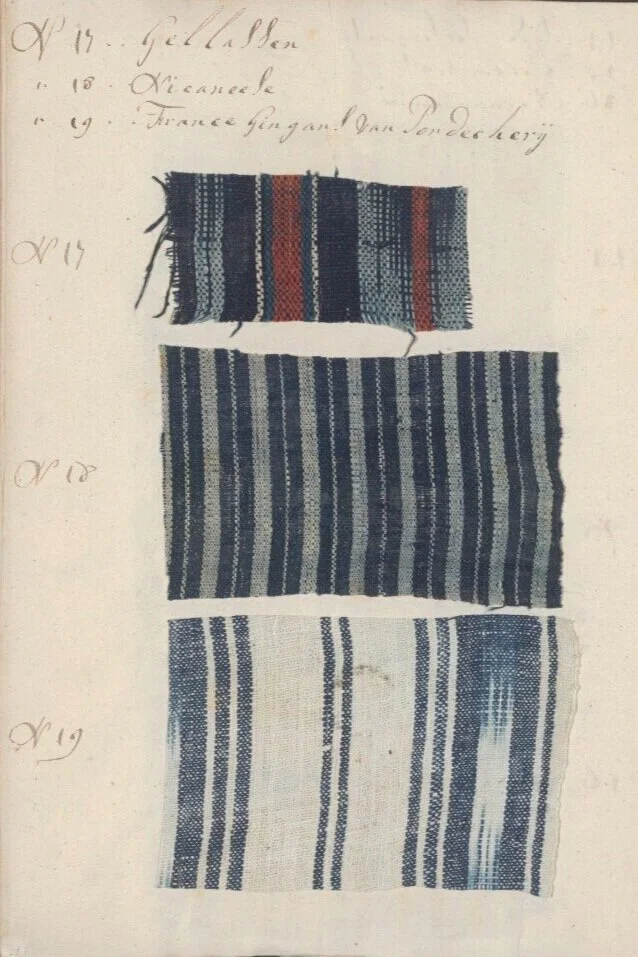The First Reconstruction: Black Politics in America from the Revolution to the Civil War
Van Gosse interviewed by Jessica Georges
It may be difficult to imagine that a consequential black electoral politics evolved in the United States before the Civil War, for as of 1860, the overwhelming majority of African Americans remained in bondage. Yet free black men, many of them escaped slaves, steadily increased their influence in electoral politics over the course of the early American republic. Despite efforts to disfranchise them, black men voted across much of the North, sometimes in numbers sufficient to swing elections.
Read MoreContiguous Cloth: Textiles and the Slave Trade in New Netherland
By Carrie Anderson
Sometime in the fall of 1661 the Nieuw Nederlantse Indiaen docked in the harbor of New Amsterdam carrying documents and cargo from Curaçao, the Dutch colony that served as a central hub of the slave trade for both Dutch and Spanish colonies in the Americas. The skipper of the ship, Dirck Jansz van Oldenburg, carried with him a list of documents that were to be delivered to Pieter Stuyvesant (1612-1672), the director-general of New Netherland between 1647 and 1664.
Read MoreMastering Paradox: John Jay as a Slaveholding Abolitionist
By David N. Gellman
“Alexander Hamilton, Enslaver? New Research Says Yes” announced the New York Times in a November 2020 news story. A paper published online by Jessie Serfilippi, a researcher at the Schuyler Mansion State Historic Site, uncovered striking new evidence to clarify long muddied waters about Hamilton’s personal connections to this deep-seated New York institution. Serfilippi’s dogged research is proof once again that even traditional archives still hold revelations.
Read MoreDyckman Discovered: Generations of Slavery on the Dyckman Property in Inwood, 1661-1827
By Richard Tomzack
On Tuesday, May 21, 1765, an enslaved African American named Will escaped the estate of Jacob Dyckman in Kingsbridge, New York. Taking nothing but his clothes, described by Dyckman as a “blue Broad Cloth Coat,” and “Homespun Trowsers, a Beaver Hat, halfworn, with a hole through the rim,” Will made his escape under the cover of darkness. Like many of the 10,000 enslaved individuals living in the province of New York, Will had been bought and sold multiple times, passing from the ownership of both the Alsop and Keteltas families in New York City, before Jacob Dyckman purchased him and relocated him to his property in Kingsbridge.
Read MoreNew York and the Death of the Atlantic Slave Trade
Reviewed by Samantha Payne
John Harris’s The Last Slave Ships: New York City and the End of the Middle Passage reveals how and why the long survival of the slave trade in the United States was related to the politics of slavery across the Atlantic World. During the first half of the 19th century, more than seventy-five percent of enslaved Africans transported to the New World arrived in Brazil. In 1850, Brazil abolished the slave trade — an act which, Harris argues, transformed the inner workings of the illegal traffic in the United States.
Read MoreThe World That Fear Made: Interview with Jason T. Sharples
Interviewed by Madeline Lafuse
Today on the blog, Madeline Lafuse speaks with Jason T. Sharples, author of the recently published The World That Fear Made : Slave Revolts and Conspiracy Scares in Early America, about how the fear of slave conspiracies shaped New York City and early America.
Read MoreMonuments of Colonial New York: Stuyvesant and Hudson
Douglas Hunter and Nicole Maskiell
Today’s installments in Gotham’s ongoing series on monuments in / about colonial NYC, takes us back to Nieuw Amsterdam. Douglas Hunter and Nicole Maskiell ask us to reconsider the memorials of two dominant figures of the Dutch period: Henry Hudson and Petrus Stuyvesant. Uniting their pieces is a call to think more about the men — and in Maskiell’s case, the women, too — who toiled under these leaders.
Read MoreA Long and Complex Legacy:
An Interview with Thai Jones on the Columbia University and Slavery Project
Interviewed by Robb K. Haberman
Today on the blog, editor Robb Haberman speaks with Thai Jones, who co-taught the Columbia University and Slavery Seminar in 2020, about the history of slavery and its continuing legacy at King’s College and Columbia University.
Read MoreDyckmanDISCOVERED: Fostering Inclusive Historical Narratives
By Meredith Sorin Horsford
In 2015, the Dyckman Farmhouse Museum (DFM), which had been a very traditional historic site with little relationship to its community, came under new leadership. Soon after, DFM became the recipient of a grant program called shatterCABINET with the Chipstone Foundation, which provides funding to rethink how historic house museums can be relevant to their present-day community. Through this grant, the Dyckman Farmhouse removed all of the room barriers that had previously prevented visitors from entering the period rooms, installed bilingual labels and signage, and began offering bilingual programs, promotional materials, and visitor services. This not only impacted the audience that we serve, as neighborhood residents began visiting the museum for the first time, but it also helped the organization reshape public programs to feature interpretation that connects the history of the site and its rural roots to the present-day urban community.
Read More






